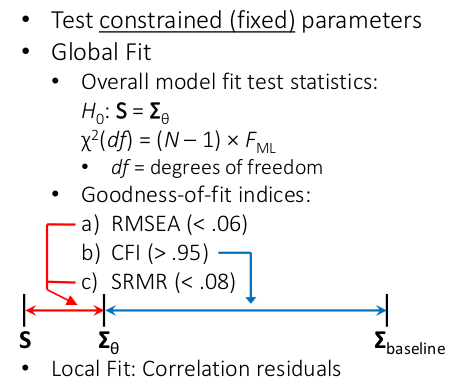cory_lower <-
c(.690,
.702, .712,
.166, .245, .188,
.163, .248, .179, .380,
.293, .421, .416, .482, .377,
-.040, .068, .021, .227, .328, .238,
.143, .212, .217, .218, .280, .325, .386,
.078, .145, .163, .119, .254, .301, .335, .651,
.280, .254, .223, .039, .066, .059, .018, .152, .129,
.182, .202, .186, .012, -.008, .051, .052, .202, .177, .558,
.112, .154, .128, .029, .021, .084, .160, .221, .205, .483, .580)
library(lavaan)This is lavaan 0.6-19
lavaan is FREE software! Please report any bugs. I1 I2 I3 I4 I5 I6 I7 I8 I9 I10 I11 I12
I1 1.000 0.690 0.702 0.166 0.163 0.293 -0.040 0.143 0.078 0.280 0.182 0.112
I2 0.690 1.000 0.712 0.245 0.248 0.421 0.068 0.212 0.145 0.254 0.202 0.154
I3 0.702 0.712 1.000 0.188 0.179 0.416 0.021 0.217 0.163 0.223 0.186 0.128
I4 0.166 0.245 0.188 1.000 0.380 0.482 0.227 0.218 0.119 0.039 0.012 0.029
I5 0.163 0.248 0.179 0.380 1.000 0.377 0.328 0.280 0.254 0.066 -0.008 0.021
I6 0.293 0.421 0.416 0.482 0.377 1.000 0.238 0.325 0.301 0.059 0.051 0.084
I7 -0.040 0.068 0.021 0.227 0.328 0.238 1.000 0.386 0.335 0.018 0.052 0.160
I8 0.143 0.212 0.217 0.218 0.280 0.325 0.386 1.000 0.651 0.152 0.202 0.221
I9 0.078 0.145 0.163 0.119 0.254 0.301 0.335 0.651 1.000 0.129 0.177 0.205
I10 0.280 0.254 0.223 0.039 0.066 0.059 0.018 0.152 0.129 1.000 0.558 0.483
I11 0.182 0.202 0.186 0.012 -0.008 0.051 0.052 0.202 0.177 0.558 1.000 0.580
I12 0.112 0.154 0.128 0.029 0.021 0.084 0.160 0.221 0.205 0.483 0.580 1.000

